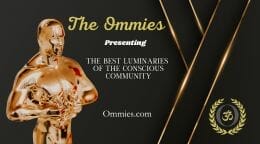Jane Goodall: Seeds Of Hope

Before the meeting, over dinner with the diplomat Malcolm MacDonald (who had visited her briefly in Gombe and would become Governor-General of Kenya in 1963), Goodall shared her intention to champion the welfare of the captive chimps: “I was really excited.”

But MacDonald, with his experience as a politician, could see a flaw. Speaking out on behalf of the chimps to a packed auditorium would be a direct criticism of Zuckerman’s leadership of the zoo. Jane Goodall recalls MacDonald telling her. “You’ll make an enemy for life, and you don’t want an enemy like that.” Instead, Jane Goodall suggested several simple changes to the chimps’ enclosure that would improve their welfare, and MacDonald worked behind the scenes to see them implemented. “What I learned then is: don’t let people lose face, don’t try to do something publicly until you’ve tried every which way to do it quietly. I’ve found that so helpful to me,” she says, particularly in places like Africa and China.
Naturally, Zuckerman took the credit for the improvements to the chimps’ enclosure. “I don’t mind two hoots as long as it gets done,” Goodall says.
A capacity for seeing the bigger picture may go some way to explaining her success as an activist. She pinpoints her transformation to 1986, and a chimpanzee conference organized by the Chicago Academy of Sciences to coincide with the publication of The Chimpanzees of Gombe. By then, she’d spent more than 25 years in the field, completed her Ph.D., established the Gombe Stream Research Center, got married, raised a son and made further groundbreaking observations on chimpanzee society – including insights into chimp communication, sex, mother–infant bonding, inter-community warfare, and cannibalism. But at the age of 52, she walked away from the field and turned to life on the road.
 More than half a century since she first engineered improvements to the conditions of the chimpanzees at London Zoo, Jane Goodall is still fighting hard on behalf of captive chimps too. In the 1980s, she raised ethical concerns about their use in xenotransplantation, which led the medical community to steer away from this practice. More recently, she has worked with Francis Collins, Director of the National Institutes of Health in the US, to phase out their use of captive chimpanzees in medical research; she is delighted the US Senate voted to increase the budget available for the retirement of these chimps. “We are beginning to win,” she says. I ask Goodall if she is in favor of a blanket ban on the use of chimpanzees in medical research.
More than half a century since she first engineered improvements to the conditions of the chimpanzees at London Zoo, Jane Goodall is still fighting hard on behalf of captive chimps too. In the 1980s, she raised ethical concerns about their use in xenotransplantation, which led the medical community to steer away from this practice. More recently, she has worked with Francis Collins, Director of the National Institutes of Health in the US, to phase out their use of captive chimpanzees in medical research; she is delighted the US Senate voted to increase the budget available for the retirement of these chimps. “We are beginning to win,” she says. I ask Goodall if she is in favor of a blanket ban on the use of chimpanzees in medical research.
“I can’t quite say that. But what I can say is that, ethically and morally, I feel it’s wrong to use them, and it’s absolutely wrong to put them in five-foot by five-foot cages.” Jane Goodall puts chimps at the forefront of the wider debate about the use of experimental animals. “At one time, the scientists said we’ll always need animals for this – and now we don’t,” she says. “If science really puts its mind to getting alternatives… once they do, they’re cheaper and usually safer.”
“This is Cow” – a gift handed to her during a recent visit to the dairyland state of Wisconsin. “I was going to give Cow to the next deserving child,” she explains, but instead, she has turned her into “a spokesperson” for abused farm animals. She looks at the toy and then talks about it as if she’s giving it praise. “Cow has worked really hard – she has created I don’t know how many vegetarians, even in places like Argentina where they live on meat.”
Before I go, Jane Goodall wants to show me some drawings she made as a child. They are reproduced in Me… Jane, a children’s book by Patrick McDonnell. I have spent the last two hours in the polite, inspiring company of a woman precisely twice my age.
Finally, when I hold out my hand for her to shake, she spurns it and offers me something far more rewarding: a chimpanzee embrace. Her delicate arms envelop me, slowly, widely, deliberately. There is something categorically different about this hug; something that will stay with me forever. “Chimpanzees don’t say goodbye,” she says. I walk to the door, trying to fathom what to make of this. I turn and call out another farewell, but Goodall doesn’t reply. She has turned away from me and didn’t look back.
Editor: Mike Herd Photographer: Ben Gilbert Copyeditor: Tom Freeman
Article first appeared on Mosaic and is republished here under a Creative Commons license.

OMTimes Magazine is one of the leading on-line content providers of positivity, wellness and personal empowerment. OMTimes Magazine - Co-Creating a More Conscious Reality









